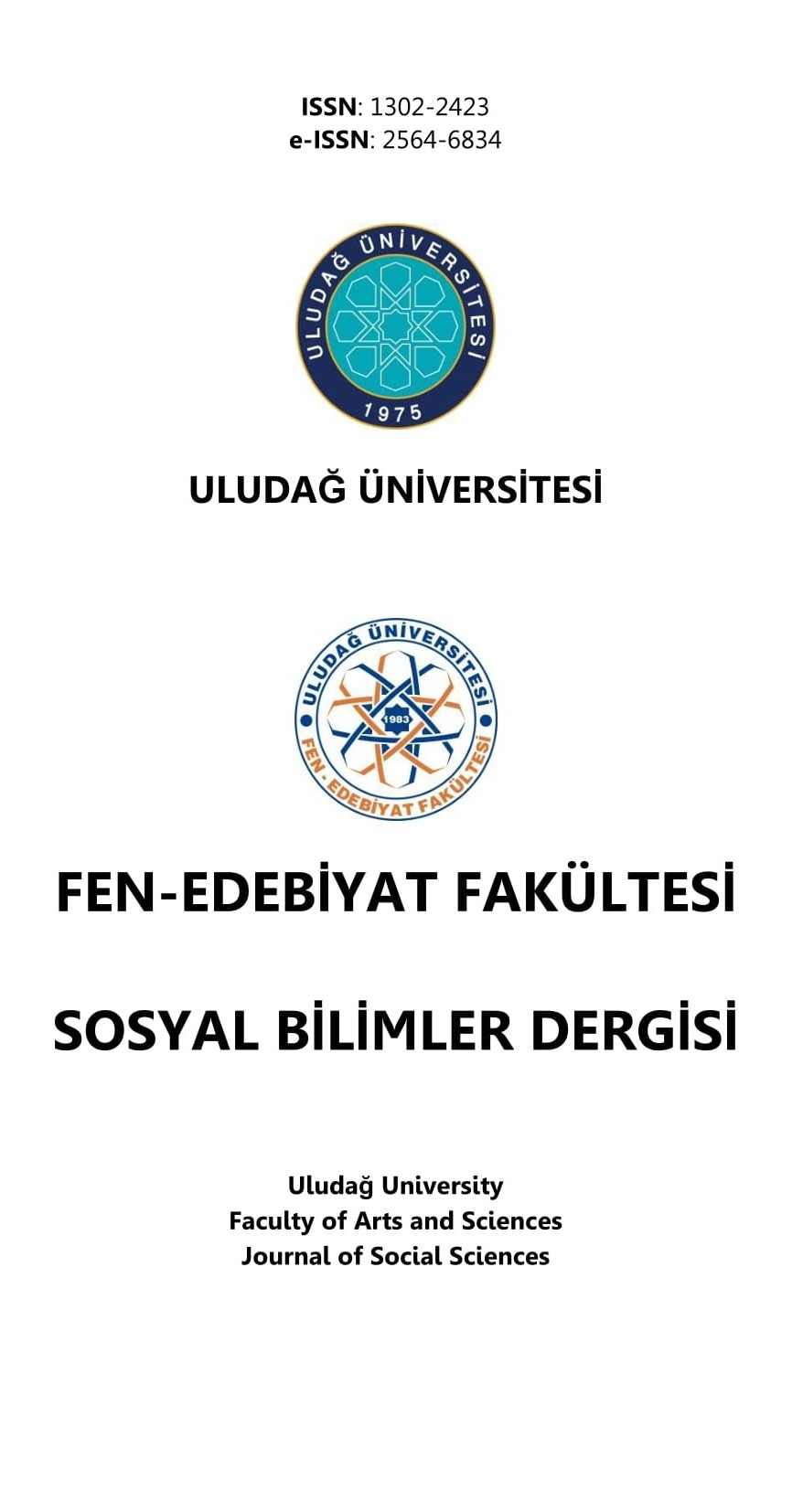İbrani Mitinin Yıkımı: Anita Diamant’ın Kırmızı Çadır’ında Dişil Yazı
Anita Diamant’ın ilk romanı Kırmızı Çadır (1997), Eski Ahit’in Yaratılış bölümündeki Yakub ve Lea’nın kızı, Yusuf’un kız kardeşi Dina’nın hikâyesini anlatır. Bu yeniden yazımda, Diamant, Eski Ahit’in sessiz bırakılan kadını Dina’yı romanın anlatıcısı yapar. İbrani mitinden tamamen farklı bir anlatı yaratan yazar, kadın bedeni, dişilik ve cinsel güce odaklanarak fallogosentrizmin hiyerarşik yapılarını alt üst eder. Bu çalışma, ataerkil ideoloji ve söylemin dişil dil ve ‘dişil yazı’ aracılığıyla nasıl sorgulandığını argümanını post yapısalcı feminist kurama dayandırarak incelemektedir. Yeniden yazılan metnin analizi, dişil yazının kadın bedenini ve deneyimlerini erkek merkezli ideolojinin otoritesinden kurtararak özgürleştirdiğini ortaya koymaktadır. Buna ek olarak, Diamant’ın ataerkil düzeni bozmak ve kadın merkezli mit yaratmak için kullandığı metinsel stratejiler, kadın kimliğinin alternatif tanımlarını sunmaktadır.
Anahtar Kelimeler:
dişil yazı, ginosentrik, fallogosentrizm, post-yapısalcı feminist kuram
SUBVERTING THE HEBREW MYTH: FEMININE WRITING IN ANITA DIAMANT’S THE RED TENT
Anita Diamant’s first novel The Red Tent (1997) retells the story of Dinah, Jacob’s and Leah’s daughter, Joseph’s sister in the Genesis chapter of the Old Testament. In this revised story, Diamant creates Dinah, the silenced woman of the Old Testament, as the narrator of the novel. Weaving a different narrative than the Hebrew myth, the narrator tries to subvert hierarchical structures of phallogocentrism by focusing on women’s bodies, femininity, and sexual power. This study, basing its argument on post-structuralist feminist theory, examines how patriarchal ideology and discourse are challenged through female language and ‘feminine writing’. The analysis of the rewritten text reveals that feminine writing frees the female body and female sexuality from the authority of androcentric ideology. Additionally, the textual strategies, used by Diamant to deconstruct the patriarchal order and to create a gynocentric myth, present alternative definitions of female identity.
___
- Bronner, L. L. (2004). Stories of biblical mothers: Maternal power in the Hebrew Bible. University Press of America.
- Cabot, V. (2000). Speaking volumes: Woman’s voice; ‘red tent’ tells other side of story. Jewish News of Greater Phoenix, 52(19), 61-74.
- Chakraborty, D. (2013). Analyzing ecriture feminine in the laugh of the Medusa. European Academic Research, I(9), 2895-2904.
- Cixous, H. (1976). The laugh of the Medusa. Signs, 1(4), 875-893.
- De Beauvoir, S. (1997). The second sex. H. M. Parshley (Ed. and Trans.), Vintage Publishing.
- Diamant, A. (2002, January 2). Author chat. Washington Post Online, http://discuss.washingtonpost.com/wpsrv/zforum/01/author_diamant010101.htm.
- Diamant, A. (2003). Pitching my tent: On marriage, motherhood, friendship, and other leaps of faith. Scribner Publishing.
- Diamant, A. (2009). The red tent. 10th Anniversary ed. Allen & Unwin.
- Diamant, A. (2019a, September 11) Frequently asked questions. https://anitadiamant.com/the-red-tent-frequently-asked-questions/.
- Diamant, A. (2019b, November 20). The red tent - Q&A. https://anitadiamant.com/the-red-tent-qa/.
- Dworkin, A. (1974). Woman hating. Penguin Books.
- Fetterman, B. V. (2007, November 29). Significant Jewish books Reform Judaism Online https://reformjudaism.org/author/bonny-v fetterman?page=0.
- Finding, A. (2004). Anita Diamant’s The red tent: A reader’s guide. The Continuum International Publishing Group Inc.
- Fuchs, E. (2003). Sexual politics in the Biblical narrative. Sheffield Academic Press.
- Gerner, L. (1987). The creation of the patriarchy. Oxford University Press.
- Irigaray, L. (1985). Speculum of the other woman. G. C. Gill (Trans.), Cornell University Press.
- Irigaray, L. (1993). Je, tu, nous: Toward a culture of difference. A. Martin (Trans.), Routledge.
- Justice, F. L. (2007). An interview with Anita Diamant, http://www.copperfieldreview.com/interviews/diamant.html. (Accessed November 29, 2019).
- Millett, K. (2016). Sexual politics. Columbia University Press.
- Ostriker, A. (1993). Out of my sight: The buried woman in Biblical narrative. In Feminist Revision and the Bible (pp. 27-40), Blackwell Publishing.
- The Scofield Study Bible. (2002). (New King James Version). C. I. Scofield (Ed.), Oxford University Press.
- Tumanov, V. (2007). Dinah’s rage: The retelling of Genesis 34 in Anita Diamant’s The red tent and Thomas Mann’s Joseph and his brothers. Canadian Review of Comparative Literature, 34(4), 375-388.
- Woolf, V. (1929/1977). A room of one’s own. Grafton. Harper Collins Publishers.
- Başlangıç: 1999
- Yayıncı: Bursa Uludağ Üniversitesi
Sayıdaki Diğer Makaleler
KÜRESELLEŞME, YERELLEŞME VE YÖNETİŞİM PERSPEKTİFİNDEN BÖLGESEL KALKINMA AJANSLARI
Batı Maneviyatının Gelişimi: Antik Yunan ve Roma’dan Çağdaş Uygulamalara
EĞİTİM ODAKLI SANAL EVREN TASARIMI: YILDIZ TEKNİK ÜNİVERSİTESİ ÖRNEĞİ
Ertan TOY, Bahadır UÇAN, Muhemmet Fatih KILAVUZ, Tuba UĞRAŞ, Oğuz ALTUN, Betül AYDOĞDU, Elif ÇALIŞKAN
Nebiye KONUK KANDEMİR, Elif HABİP
ESKİ ANADOLU TÜRKÇESİNDE YÜKÜMLÜLÜK KİPLİĞİ: RİSÂLETÜ’N-NUSHİYYE ÖRNEĞİ
Mobil Oyunların Benimsenmesinde Belirleyiciler: UTAUT2 Modelinin Güven ve Ödül İle Genişletilmesi
“YALNIZLIĞIN OYUNCAKLARI”NDA OYUNA SIĞINAN DUYGULAR
ERGENLERDE AİLE YAŞAM DOYUMUNUN BAZI DEMOGRAFİK DEĞİŞKENLERE GÖRE İNCELENMESİ
